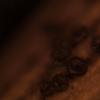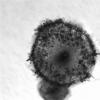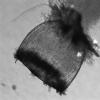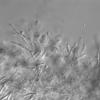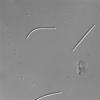
20-12-2025 23:08
Patrice TANCHAUDBonsoir, récolte sur sol sablonneux dans l'arri�

21-12-2025 09:32
Hello.A tiny ascomycete found embedded in wood in

20-12-2025 15:47
Mirek GrycHi.These grew on pine wood that was heavily covere

18-12-2025 21:17
Pol DebaenstThe identification took me to Byssonectria deformi

15-12-2025 07:09
 Danny Newman
Danny Newman
indet. Rutstroemiaceae sp. on unk. fallen leavesMc

19-12-2025 10:10
Patrice TANCHAUDBonjour, récolte réalisée en milieu dunaire, a

18-12-2025 17:23
 Bruno Coué
Bruno Coué
Bonjour,je serais heureux d'avoir votre avis sur c

18-12-2025 18:07
Margot en Geert VullingsThese plumes were found on rotten wood.They strong
I have recently found a cupulate coelomycete on Pinus sylvetris (Scots Pine) needle litter
in Wales. It has conidiomata which are immersed at the base and are pale brown
and collapse on drying (50-250um wide), and occur in small groups or singularly.
The conidiomata are flat topped with an ostiole, and a ring of dematiaceous,
blunt, irregular, short 'hairs' around the rim. It produces narrow, cylindrical
phialidic, conidiogenous cells on septate, sometimes slightly swollen conidiophores.
Conidia are hyaline, narrowly cylindrical and non septate (approx. 19 x 1um).
I have had a look at most of literature on cupulate
coelos by Brian Sutton but my specimen does not correspond to anything that I have
looked at. David Minter said it's not Fujimyces, Linodochium hyalinum or L.
formosum, Lemalis aurea. It's not Pseudocenangium succineum. He has never seen
anything like it before or never come across anything like it in the literature,
unless it has been described recently.
Has anyone come across this before??
Thanks,
Jo

